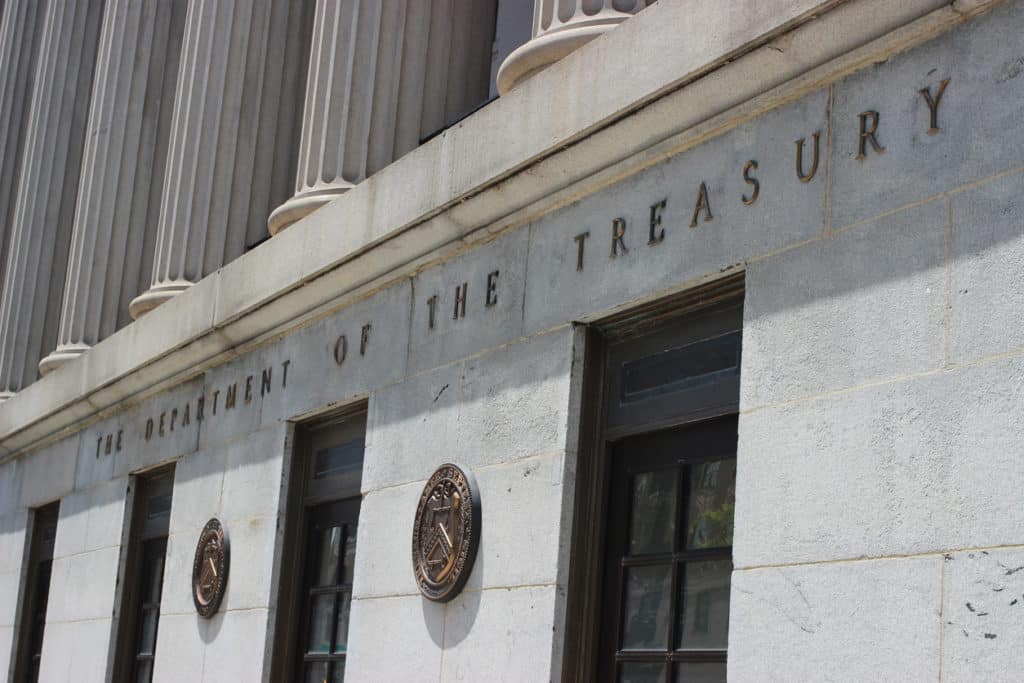

The tokenized fund launched by BlackRock has helped boost tokenized US Treasuries on public blockchains above $1bn.
BlackRock said in a statement on 20 March 2024 that it was unveiling its first tokenized fund issued on a public blockchain, the BlackRock USD Institutional Digital Liquidity Fund. BUIDL provides qualified investors with the opportunity to earn U.S. dollar yields by subscribing to the fund through Securitize Markets.
🐂 Bullish
Tokenization promises to have an even bigger impact on the crypto industry than the spot BTC ETFs!
Hundreds of trillions of dollars in existing capital are just waiting to be guided onchain by institutions, and when BlockRock moves, markets pay attention
(5/6) pic.twitter.com/AAR4HsUB0W
— Bankless (@BanklessHQ) March 26, 2024
Through tokenization BUIDL enables the issuance and trading of ownership on a blockchain, expands investor access to on-chain offerings, provides instantaneous and transparent settlement, and allows for transfers across platforms as investors can transfer their tokens 24/7/365 to other pre-approved investors. BNY Mellon enables interoperability for the fund between digital and traditional markets.
BlackRock said BUIDL seeks to offer a stable value of $1 per token and pays daily accrued dividends directly to investors’ wallets as new tokens each month. The fund invests 100% of its total assets in cash, U.S. Treasury bills, and repurchase agreements, allowing investors to earn yield while holding the token on the blockchain.
Tom Wan, a research analyst focusing on on-chain analytics at 21.co, the parent company of digital asset manager 21shares, said that BUIDL has increased by 400% in a week.
Again, feel free to track the development of Tokenized US treasuries via our @DuneAnalytics dashboard in the link belowhttps://t.co/5fuMXBOARy
— Tom Wan (@tomwanhh) March 27, 2024
Wan highlighted that Ondo Finance, which provides institutional-grade, blockchain-enabled investment products and services, has become the largest holder of BUIDL.
Ondo’s first core products are tokenized cash equivalents that deliver very low risk, high-quality yield from US Treasuries, money market funds, and similar instruments. The firm said in a blog that its cash equivalent offering has been simplified into two main products including OUSG, a cash management and settlement instrument for global institutional and high net worth individuals, including those within the US, with permissioned secondary markets, structured as an investment fund.
📢 OUSG will soon offer 24/7/365 subscriptions and redemptions via USDC and transition its backing predominantly into the newly launched @BlackRock USD Institutional Digital Liquidity Fund (BUIDL).https://t.co/qXmC3Y3adm
— Ondo Finance (@OndoFinance) March 27, 2024
As part of this evolution, Ondo said it would reallocate a substantial portion of OUSG’s assets into BUIDL.
“We’re excited to see BlackRock embracing securities tokenization with the launch of BUIDL, especially its broad cooperation with ecosystem participants,” added Ondo. “Not only does this further validate our original concept of a tokenized US Treasury fund, but it also bolsters our thesis that tokenization of traditional securities on public blockchains represents the next major step in the evolution of financial markets.”
In another example of a traditional financial institution expanding in tokenized funds, Laser Digital, the digital asset subsidiary of Japanese bank Nomura is launching the Laser Digital Polygon Adoption Fund, which is specifically tailored for sovereign wealth funds, institutional funds, and private asset managers.
This adoption fund is more than just giving exposure to institutions.
It's about giving them access to onchain unlocks, like liquid staking, aggregated liquidity, and composable finance.
The institutions are discovering liquid tokens with yield.
TradFi simply better onchain. https://t.co/FYbjekSYpR
— Colin Butler (@RealCryptoColin) March 27, 2024
On 27 March 2024 Laser Digital said in a statement that it is launching the fund in collaboration with blockchain protocol TruFin, a WebN incubated company. The fund provides institutional investors with exposure to Polygon-MATIC, a native token for the Polygon proof of stake protocol, which allows participants to earn yield from regulating and validating cryptocurrency transactions.
Sebastien Guglietta, head of Laser Digital Asset Management, said in a statement: “Laser Digital Asset Management aims to transform DeFi investment opportunities into investable TradFi solutions. We are making Polygon-Matic digital asset investment accessible, in the most secure, and efficient way for institutional investors.”
UK framework
Laser Digital’s new fund will be available, following the relevant registrations, for distribution to institutional investors across eligible jurisdictions, starting with the United Kingdom.
On 26 March 2024 the technology working group of the UK government’s asset management taskforce published its second report, which set out support from UK regulators, the Financial Conduct Authority and HM Treasury, for investment management firms in tokenizing funds, Further Fund Tokenisation: Achieving Investment Fund 3.0 Through Collaboration.
The first report laid out a regulator-approved model and the second report supports other use cases, including funds being able to hold digital securities and the collateralization of money market funds. The UK government has also committed to consider whether and how distributed ledger technology might be applied to a UK sovereign debt instrument.
The Investment Association, the trade body for asset managers in the UK, has offered to facilitate a number of use cases over the coming months. Suggested next steps include allowing on-chain settlement via digital money, holding tokenized assets in portfolios and the possibility of expanding the scope of solutions to public permissioned networks.
Adam Belding, chief architect at global funds network Calastone, said in a blog that the UK has provided a blueprint for a regulatory-compatible model for tokenizing UK investment funds.
Belding said: “This model underscores the transformation of the fund industry into a more efficient, transparent, and digitally-enabled sector, promising enhanced services for investors and a streamlined operational infrastructure for fund managers.”
He continued that the second report delves deeper into the practical application of tokenization and DLT in the asset management space.
“By applying DLT to the management of the IBOR, ABOR, and CBOR, truly transformational opportunities begin to present themselves,” added Beldin. “The ultimate outcome could be a vehicle that directly invests in tokenized underlying assets, seeing a fund transform into a new type of collective investment that directly holds ownership of tokens which could natively represent equity, fixed income and other asset types.”
He highlighted that the possible use of digital money for settlement and the use of tokenized money market fund units as collateral extends tokenization to liquidity and collateral management practices.
“It also shows how rather than the traditional finance ecosystem seeing the blockchain ecosystem as the space to move into, there are also many use cases where the evolving blockchain ecosystem can benefit from access to financial services from the existing ecosystem,” said Beldin. “The path to ‘Investment Fund 3.0’ is paved with innovation, collaboration, and a shared vision for a better, more digitally-integrated future for all stakeholders in the investment fund industry.”




